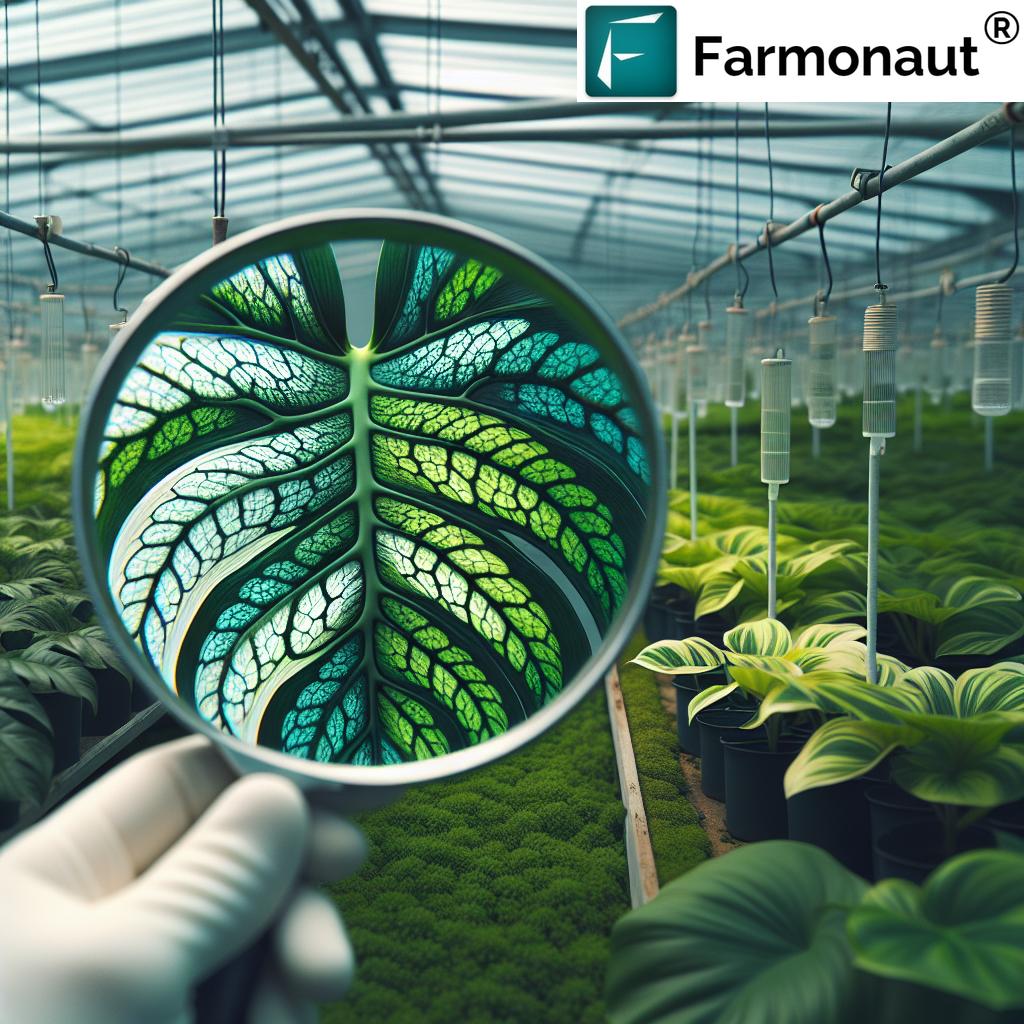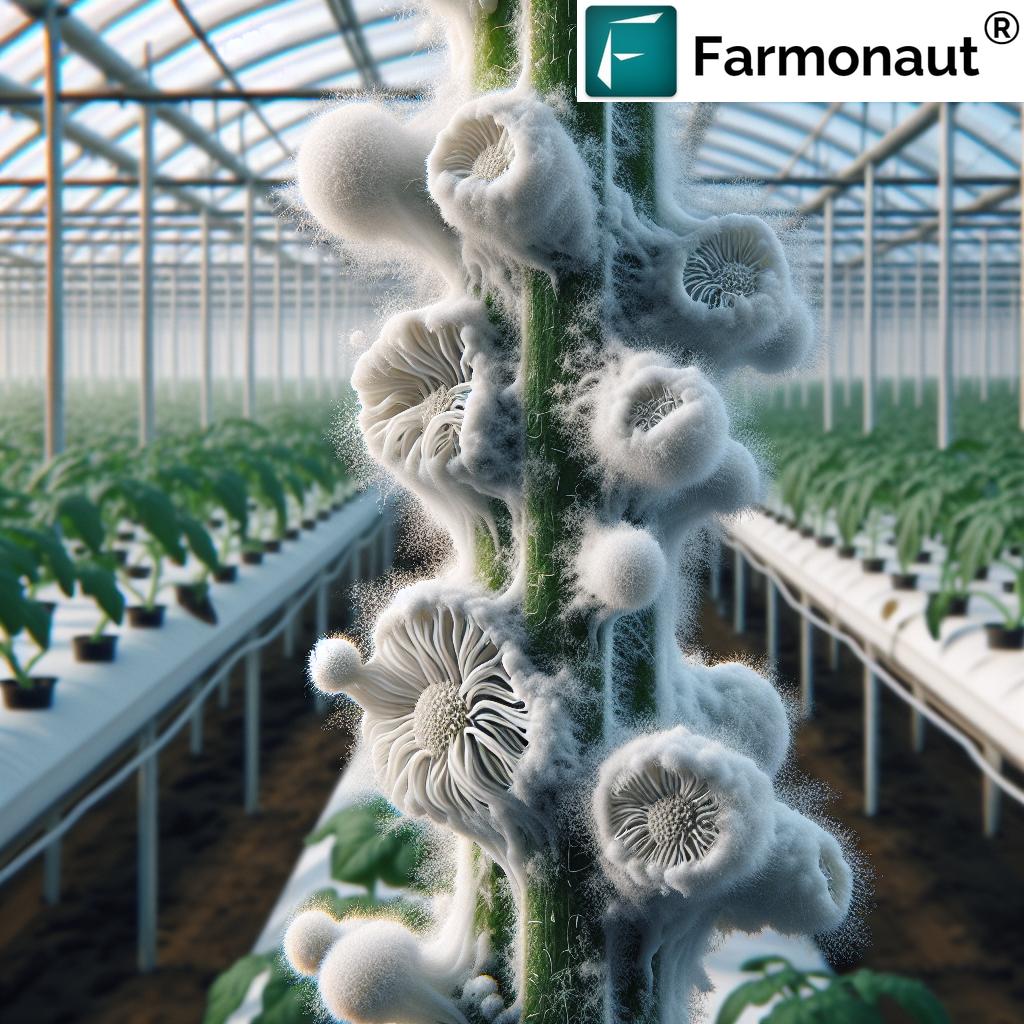Farming Sector Crisis: 7 Sustainable Solutions
“Global agriculture faces a 25% rise in operational costs by 2030 without sustainable interventions.”
Introduction: Food Security and the Farming Sector Crisis
The world’s food security depends on a robust, resilient, and sustainable agricultural sector. Yet, today’s farming sector is facing an unprecedented crisis marked by rising operational costs, labor shortages, increasing financial burdens, environmental impact, and social disconnect. These complex agriculture challenges directly threaten the viability of farms, the security of our food supply, and the delicate balance between economic growth and environmental well-being.
Understanding the causes behind these pressures is essential. Strategic implementation of effective, scalable, and sustainable farming practices must be prioritized to address the crisis and secure a resilient future for farmers and consumers alike. In this blog, we dive deep into each key challenge, and present 7 sustainable agriculture sector solutions to address them, guided by the principle that sustainability is not just a choice, but a necessity for the future of global food security.
Understanding the Agriculture Challenges in 2024 and Beyond
Agricultural producers have always faced a range of risks—from unpredictable weather to fluctuating market prices. However, the scope and severity of today’s agriculture challenges are without precedent. Growth in farm input costs—notably for seeds, fertilizers, equipment, fuel, and feed—is squeezing profit margins everywhere. Labor shortages in agriculture are worsening as the workforce ages, and urban migration outpaces rural renewal. Add to this market volatility in agriculture, and the environmental impact of farming—like soil erosion and biodiversity loss—and it’s clear that the sector stands at a crossroads.
Every challenge originates from complex systemic causes: shifting demand, climate disruptions, international trade friction, declining interest in rural farming careers, and weak funding for innovation. These elements come together, amplifying pressures on operations, reducing income stability, and making the future of agriculture more uncertain than ever.
For governments, industry, and farmers alike, addressing this crisis is a call to action. We must not only recognize the problems but work quickly towards real, sustainable solutions.
Key Farming Sector Challenges
1. Rising Operational Costs in Farming
Over the past decade, rising operational costs in farming have emerged as one of the most significant obstacles confronting agricultural producers. Multiple inputs—seeds, fertilizers, equipment, fuel, feed—are all affected by supply chain disruptions, inflation, and shifts in global demand. According to industry reports, input costs for farmers are increasing at a rate of 5–10% per year, outpacing the rise in commodity prices in many regions.
- Seeds and Fertilizers: Genetic advances and higher-yielding hybrid seeds can increase initial costs, while fertilizer prices fluctuate with the global market for petroleum-based inputs.
- Equipment & Fuel: The drive toward mechanization and fluctuating energy markets have made fuel and equipment a consistently expensive investment.
- Feed: Animal agriculture faces spikes in feed costs, eroding already slim margins for dairy and meat producers.
All of these increases pressure budgets—especially for small- and medium-scale farms—leading to narrower profit margins, difficult decisions about resource allocation, and sometimes even the cessation of operations. Farmers’ financial burden is exacerbated by unpredictable commodity prices that may not cover inflated outlays.
2. Labor Shortages in Agriculture
A second major pressure point is the growing labor shortage in agriculture. Several intersecting demographic and policy-driven factors are at play:
- Aging Workforce: The age of farm workers worldwide is increasing, with many near retirement. The replacement rate by younger workers is worrisomely low.
- Declining Immigration: Tighter immigration laws and new restrictions are reducing the flow of migrant labor into rural areas, particularly those supplying manual farm labor in sectors like fruit, vegetable, and dairy production.
- Urban Migration: Young people are increasingly drawn to the perceived opportunities of cities, resulting in rural depopulation and a shrinking agricultural workforce.
The implications are profound: increased wage costs, abandoned crops during harvest, reduced productivity, and an urgent need for automated and technological solutions to keep the sector viable. Unaddressed, these shortages threaten food security, regional economies, and the long-term sustainability of farming practices.
“Labor shortages threaten 40% of farms worldwide, emphasizing urgent need for sustainable farming practices.”
3. Market Volatility and Pricing Pressures in Agriculture
Strongly tied to operational viability is market volatility in agriculture. Fluctuating commodity prices—driven by international trade disputes, extreme weather, and supply chain disruptions—create considerable unpredictability in income and revenue.
- Dairy, Grains, and Meat: Price drops or surges in these core sectors can make or break seasonal budgets for millions of farms.
- Supply and Demand Shocks: The COVID-19 pandemic, for example, highlighted just how sensitive global supply chains are to disruption and how quickly farm-gate prices can collapse.
This unpredictability makes it nearly impossible for family-owned and even larger-scale farms to plan long-term, invest in innovation, or expand operations with confidence. It also reduces income stability, sometimes wiping out whole seasons worth of work if markets shift unexpectedly.
4. Farmers’ Financial Burden and Debt
To keep pace with rising costs and fluctuating revenues, more farmers are forced to take on additional debt. Unfortunately, high interest rates in many regions make this a risky strategy.
- Funding Gaps: In the absence of stable income, the need for short- and medium-term loans increases. These loans cover essential inputs, operations, and sometimes basic living expenses for farm families.
- Limited Flexibility: Debt obligations reduce the ability to invest in innovation, sustainability programs, or technologies that might improve long-term productivity.
Increased debt burdens threaten the financial viability of many farms, reduce operational flexibility, and hamper the sector’s ability to adapt to future agriculture challenges.
Farmonaut offers a satellite-based crop loan and insurance verification solution—a game-changer for financial institutions and farmers. Efficiently validate crop insurance claims and loan applications with geospatial data to reduce fraud, speed approvals, and expand access to vital funding.
5. Environmental Degradation, Soil Erosion & Biodiversity Loss
Centuries of intensive farming practices have resulted in environmental degradation on a global scale. Key drivers include:
- Monoculture Cropping: Repeated planting of the same crop depletes soil nutrients, weakens resistance to pests, and increases vulnerability to disease.
- Excessive Chemical Use: Over-reliance on chemical fertilizers and pesticides pollutes water sources, disrupts ecosystems, and harms biodiversity.
- Deforestation: Expansion of agricultural land into forests destroys valuable habitats for countless species and accelerates climate change.
- Soil Erosion: Heavy tillage, inappropriate land use, and lack of cover crops leave topsoil vulnerable to erosion, undermining long-term productivity.
These unsustainable practices threaten not only the viability of today’s food production but the very health of the planet. The need for sustainable farming practices has never been more urgent.
Track—and actively reduce—your farm’s carbon footprint with Farmonaut’s carbon footprinting solutions. Real-time emission data and actionable insights support compliance and help farms contribute to global climate goals.
6. Social Challenges: Declining Farmers, Aging Workforce, Public Disconnect
Beyond economics and the environment, the agricultural sector faces profound social challenges:
- Declining Number of Farms: In the United States alone, over 140,000 farms were lost between 2017 and 2022—a 7% decrease highlighting the sector’s vulnerabilities.
- Aging Farmer Population: The average age of farmers continues to rise, threatening long-term workforce sustainability.
- Urban-Rural Divide: Citizens’ increasing distance from agriculture has led to a lack of understanding and policy support, and fewer new entrants into farming professions.
These trends erode both the human and social capital necessary for future agricultural growth and sustainability.
7. Policy Gaps and Limited Education/Training
Weak policy support and a lack of farmer education and training in modern sustainable farming practices are key obstacles to sectoral transformation:
- Limited Incentives: Some regions lack sufficient subsidies or incentives to encourage the adoption of sustainable agriculture solutions.
- Outdated Skills: Farmers frequently lack access to the latest scientific knowledge, technical training, and digital tools needed to optimize their operations for sustainability and profit.
Policy limitations and training gaps reduce innovation, leaving farms unprepared for the dynamic challenges of modern agriculture.
7 Sustainable Solutions to the Agriculture Sector Crisis
Addressing the farming sector’s multifaceted crisis demands coordinated action on several fronts. Below are seven sustainable solutions—each mapped to specific challenges—capable of moving our global food system towards greater resilience, stability, and environmental security.
-
Adoption of Precision and Digital Agriculture
- What: The integration of data-driven technologies—like satellite imagery, IoT sensors, and farm management software—enables farmers to monitor crops in real-time, optimize inputs, and make smarter decisions.
- Benefits: Improved resource efficiency (reduced fertilizer, pesticide, and water use), better yield prediction, decreased costs, and higher margins.
- Farmonaut’s Role: We offer a comprehensive Precision Agriculture Platform for large-scale and cooperative farming management and individual farmers, including crop health monitoring, resource tracking, and personalized AI advice.
- Learn More: If you’re a developer, explore our APIs and weather data and API developer documentation to build your custom tools!
-
Sustainable Soil and Water Management Practices
- What: Implement cover cropping, crop rotation, reduced tillage, and optimized irrigation to protect and regenerate soil health.
- Benefits: Reduces soil erosion, improves water retention, enhances biodiversity, and contributes to long-term productivity.
- Farmonaut’s Role: Our satellite-based soil and moisture monitoring tools enable farmers to fine-tune irrigation and cropping for maximum efficiency and minimum waste.
-
Labor Optimization through Automation & Training
- What: Invest in automation (e.g., automated machinery, irrigation systems, drones) and prioritized on-farm training to overcome labor shortages in agriculture.
- Benefits: Reduces demand for manual labor, increases harvest efficiency, and attracts younger workers with tech-driven roles.
- Farmonaut’s Role: Our real-time advisory and data-driven fleet and resource management tools help large farms optimize machinery use for lower costs and safer operations.
-
Diversification and Resilient Cropping Systems
- What: Shift from monoculture towards diversified, climate-adaptive cropping. Integrate perennials, legumes, or agroforestry for resilience.
- Benefits: Reduces risk from market and climate volatility, improves soil fertility, and enhances biodiversity on farms.
- Farmonaut’s Role: Our platform supports monitoring of multiple crop types and provides tailored recommendations via AI.
-
Supply Chain Transparency & Blockchain-Based Traceability
- What: Use blockchain technology to trace agricultural products from farm to consumer, ensuring authenticity and safety.
- Benefits: Builds consumer trust, reduces fraud, improves compliance, and unlocks premium market access.
- Farmonaut’s Role: Our blockchain-based product traceability solution brings transparency to agricultural supply chains.
-
Policy Support & Farmer Incentives
- What: Advocacy for government policies, smart subsidies, and regulatory reforms to drive the adoption of sustainable farming practices.
- Benefits: Lowers barriers for smallholders, improves economic viability, and unlocks resources for education and innovation.
- Farmonaut’s Role: Our solutions generate validated data for compliance and policy reporting, strengthening the voice of farmers and cooperatives.
-
Investment in Farmer Education and Public Awareness
- What: Support farmer education and public outreach (through extension services, workshops, and digital learning platforms) to spread best practices, bridge the rural-urban divide, and foster appreciation for agriculture.
- Benefits: Empowers farmers to implement sustainable solutions, ensures knowledge transfer to the next generation, and mobilizes broader societal support for farming.
- Farmonaut’s Role: Our AI-driven Jeevn Advisory System provides actionable, real-time advice, weather forecasts, and updates to farmers directly via web and mobile.
Comparative Solutions Table: Farming Sector Crisis
| Challenge | Estimated Impact | Sustainable Solution | Estimated Improvement | Environmental Benefit |
|---|---|---|---|---|
| Rising Operational Costs | 20–30% increase in input costs | Precision Agriculture & Digital Tools | 10–30% cost reduction | Lower input and chemical usage |
| Labor Shortages | 40% of farms affected by shortages | Automation & Workforce Training | Up to 50% reduction in labor dependency | Lower carbon footprint from reduced travel |
| Market Volatility | 10–50% fluctuation in commodity prices | Diversification & Crop Insurance | 15–40% improved income stability | Improved land management resilience |
| High Debt Burden | 20–40% farms at credit risk | Satellite-verified Crop Loan Programs | 10–25% improved funding access | Minimized waste, efficient investments |
| Environmental Degradation | 20–40% soil loss, 70% biodiversity loss | Regenerative Practices & Soil Monitoring | Up to 50% restoration of soil health | Increase in biodiversity and carbon capture |
| Social Disconnect | Decline in public support for agriculture | Education & Public Engagement | 20–35% increase in sector awareness | Support for sustainable policy advocacy |
| Policy/Education Gaps | Slower technology adoption rates | Policy Reform & Incentives | Accelerated adoption rates (30–60%) | Wider adoption of sustainable practices |
The Role of Farmonaut in Sustainable Farming Practices
As global attention shifts to sustainable farming practices, Farmonaut stands out as a technology leader—dedicated to advancing solutions that address both economic and environmental demands in the farming sector. By harnessing the power of satellite imagery, artificial intelligence, and blockchain, we empower farmers to optimize inputs, monitor soil and crop health in real-time, adapt to market volatility, and unlock new efficiencies.
- Crop Health Monitoring: Real-time, multispectral satellite imagery allows for early detection of crop stress, disease, or pest threats—minimizing losses and maximizing yields.
- AI-Based Advisory: Jeevn AI delivers climate-smart, personalized recommendations on fertilization, irrigation, cropping cycles, and more.
- Blockchain Traceability: Harnessing secure product tracking for supply chain transparency via Farmonaut’s traceability solution.
- Fleet and Resource Management: Optimize machinery and resource allocation to lower operating costs and environmental impact. Discover more at our Fleet Management page.
- Carbon Footprinting: Quantify and reduce your farm’s carbon emissions, supporting sustainability and compliance. Visit Farmonaut Carbon Footprinting.
- Crop Loan & Insurance Validation: Our advanced geospatial analysis streamlines loan approval and insurance claim verification for individual and institutional customers. See how Farmonaut supports crop loans & insurance.
- Accessible Across Devices: Our robust mobile and web apps put powerful insights directly in the hands of farmers, agribusinesses, and policymakers.
By focusing on scalable, affordable, and actionable innovations, our mission is clear: accelerate sustainable farming solutions that enhance profit margins, secure food supplies, and safeguard the environment for generations to come.
FAQ: Farming Sector Crisis & Sustainable Solutions
What is the biggest challenge facing farmers today?
Rising operational costs—including seeds, fertilizers, equipment, fuel, and feed—present the biggest immediate challenge for most farmers. This, coupled with market volatility and labor shortages, can severely compress profit margins.
How does labor shortage affect the agricultural sector?
Labor shortages lead to unharvested crops, increased reliance on costly labor, reduced productivity, and the urgent need for automation and new workforce training. Without intervention, up to 40% of global farms may face critical labor gaps.
Why are sustainable farming practices important?
Sustainable farming practices improve soil health, conserve water, enhance biodiversity, reduce the environmental impact of farming, and support resilient food production systems that can withstand market and climate disruptions.
How does technology support sustainable agriculture?
Digital tools (satellite monitoring, AI, blockchain) increase efficiency by optimizing resource use, reducing input waste, improving crop and soil health tracking, and supporting traceability and compliance in complex food supply chains.
Can small farmers adopt precision agriculture solutions?
Yes. With affordable, scalable platforms such as Farmonaut, small and medium-sized farms can access powerful data-driven insights and tools without prohibitive investment in hardware, facilitating precision agriculture adoption globally.
How can government policy support farm sustainability?
By providing targeted subsidies, incentives for sustainable practices, regulatory reforms, and investment in extension services and education to help farmers adopt new, climate-resilient technologies and approaches.
Where can I learn more about Farmonaut’s technology?
Visit our App portal for an in-depth overview, or explore our specific product pages for carbon footprinting, traceability, crop loan verification, and fleet management.
Conclusion: Building a Resilient, Sustainable Future for Agriculture
The farming sector crisis is a complex, multi-layered challenge—shaped by escalating operational costs, labor shortages, market volatility, environmental impact, and shifting societal attitudes toward food production. At its heart, this crisis is about more than numbers or policy: it’s about the future of our communities, the resilience of our global food system, and the planet itself.
Addressing these issues requires strategic, coordinated action—across government, private enterprise, farmers, and consumers. By understanding the causes, prioritizing sustainable farming practices, embracing technology, and supporting education and policy reform, we can meet today’s challenges and build a food-secure, environmentally secure tomorrow.
At Farmonaut, we are dedicated to empowering every farmer—from smallholders to large agribusinesses—by making advanced, data-driven agriculture affordable, accessible, and actionable. By combining satellite technology, AI, and blockchain, we aim to improve productivity, reduce the environmental impact of farming, and drive global sustainability for generations to come.
Strengthening the farming sector is not an option—it is the foundation of global food security and the linchpin of sustainable economic growth. Let’s address the agricultural sector crisis together and shape a future where farming thrives!














